
The Companies Act 2013 has been lauded as a game changer in the Indian economy. Section 135 and Schedule VII of the Act talks about the responsibility of companies, above a prescribed level of profit,to spend on CSR. Given this scenario, it becomes imperative for every business school to sensitise students on this issue. The need of the hour is to have a course related to CSR in business schools as they groom future business leaders of the country.
IMT Ghaziabad, a premier B-School inNCR, has been sensitising students on CSR. Between 2013 and 2017, the School introduced a compulsory course on CSR called Business, Government and Society (BGS) in India. The main aim of the course is to develop in students an understanding of social responsibility in the business context. It also focuses on ethics and value orientation of business. Future managers also need to understand that the success of a company lies not only in the creation of economic value, but also environmental and social value. Continuing with this trend, the Institute has, in the new academic session 2017, started another course called Sustainability and Social Responsibility.
Pedagogy and Evaluation
The pedagogy of the course includes documentaries, lectures, presentations and case studies. Students are given a few lessons on CSR, stakeholder mapping and ethics. Students’assessment is based on a mix of different parameters as role play, film review, class participation and case study. A critical component of the course is the live project where a secondary research is conducted to get a macro view of existing problems. They then undertake a field visit and study various issues. They give their recommendations for finding solutions to the existing problems – What is being done about the report? Is it being forwarded to the government or related agencies? Are the concerned agencies doing any follow up or taking any action after the report is submitted? The takeaway from such surveys is to show how business, government and society can join forces together to solve existing problems. This project has around 25 percent of weight in total assessment of the student.
This article describes some of the issues analysed by the IMT students in the areas of sanitation, healthcare and employment during January and February 2017.
- Sanitation in the Villages of Ghaziabad
A project on sanitation was taken up by Team A. They visited two densely populated areas – Bhur Bharat Nagar and Bamheta in Ghaziabad. Bamheta is situated near Shahpur in Ghaziabad. Bhur Bharat Nagar is a slum area near Ghaziabad Railway Station. The team had informal interactions with the slum dwellers and shopkeepers.
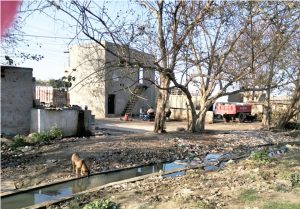 On visiting Bamheta, Team A discovered that the village has many permanent structures made of brick and cement. Many residents have built toilets. However, the drainage system is pathetic primarily due to improper slopes, insufficient maintenance, inconsistent and unpredictable flow of water. Inefficient garbage disposal is glaringly evident. Sewers have not been cleaned for ages and are completely blocked with loads of plastic bags and mounds of garbage. Residents are mainly affected by lack of sanitation facilities and have no access to potable drinking water. Residents are not serious about cleanliness drives. Food stalls are located near garbage trash containers.
On visiting Bamheta, Team A discovered that the village has many permanent structures made of brick and cement. Many residents have built toilets. However, the drainage system is pathetic primarily due to improper slopes, insufficient maintenance, inconsistent and unpredictable flow of water. Inefficient garbage disposal is glaringly evident. Sewers have not been cleaned for ages and are completely blocked with loads of plastic bags and mounds of garbage. Residents are mainly affected by lack of sanitation facilities and have no access to potable drinking water. Residents are not serious about cleanliness drives. Food stalls are located near garbage trash containers.
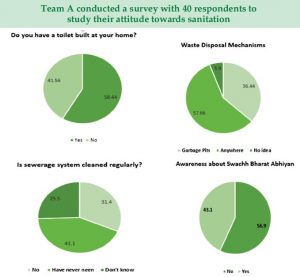 The situation in Bhur Bharat Nagar is worse. This area consists mainly of shanty dwellings made of metal sheets with a tarpaulin roof supported by bamboos. Residents live in abject poverty, working as daily wage labourers, rag pickers, and the like. Many are unemployed and some are unwilling to seek a job. Most of the shanties lack basic sanitation facility. However, the slum area has a Sulabh Shauchalaya or community toilet. They are well maintained with separate sections for men and women, providing eight latrines and around ten to twelve taps for bathing and washing. The downside is that residents are deterred from using the facility due to usage charges of Rs3/- for toilet and Rs. 5/- for bathing. There are concerns on sewerage, and women and girls have limited access to feminine hygiene products. They also face daily challenges of proper and ethical disposal of sanitary pads.
The situation in Bhur Bharat Nagar is worse. This area consists mainly of shanty dwellings made of metal sheets with a tarpaulin roof supported by bamboos. Residents live in abject poverty, working as daily wage labourers, rag pickers, and the like. Many are unemployed and some are unwilling to seek a job. Most of the shanties lack basic sanitation facility. However, the slum area has a Sulabh Shauchalaya or community toilet. They are well maintained with separate sections for men and women, providing eight latrines and around ten to twelve taps for bathing and washing. The downside is that residents are deterred from using the facility due to usage charges of Rs3/- for toilet and Rs. 5/- for bathing. There are concerns on sewerage, and women and girls have limited access to feminine hygiene products. They also face daily challenges of proper and ethical disposal of sanitary pads.
“Although the government has rolled several initiatives to address issues of sanitation and also build toilets, it was not enough. There is a need to address behavioural change and sustainable infrastructure as well as generate awareness about sanitation to achieve fruitful results”
Team A realised that although the government has rolled several initiatives to address issues of sanitation and also build toilets, it was not enough. There is a need to address behavioural change and sustainable infrastructure as well as generate awareness about sanitation to achieve fruitful results. Making sanitation sustainable is a challenging task which needs the intervention of the society at large. The Team also highlighted the involvement of the local community in planning, implementation, and monitoring of sanitation activities.
Recommendations:
Introducing PPP Models to Ensure Sustainable Sanitation
• 75 percent companies support programmes related to creating infrastructure, such as the construction of toilets and water facilities, with little focus on programmes aim at influencing behaviour. Companies can tie up with NGOs and social activists who have the expertise to build the social connect and generate awareness among the masses.
• The operation and maintenance of sanitation facilities is essential to ensure that there is no ‘functionality’ gap due to poor conditions that render these facilities unusable. However, this part has been highly neglected by Corporates. Companies could finance operations and maintenance and hire an agency through an Annual Maintenance Contract (AMC) to deliver required services on a regular basis. Subsidies and funding must be provided to start-ups who wish to build a sustainable business model and an efficient sanitation ecosystem.
• Proper support framework must be provided to the NGOs for innovating new mechanisms of recycling waste and treating waste water by companies.
- To build robust infrastructure to ensure proper sewerage and drainage systems, Government must tie up with private sector companies.
Promoting Cultural Shift
• Government and NGOs can aggressively put efforts to bring about the behavioural change of open defecation among the masses.
• Instituting incentives or penalties to reinforce desired behaviour.
• Nukkad Nataks and awareness programmes can be effective means.
• Building follow-ups into the campaign to ensure that messages are entrenched.
Promoting Education and Participation
• Introducing a school or community-based monitoring system with equal representation of men and women to ensure democratic participation in decision-making processes.
• Educating women and adolescent girls on the nuances of female hygiene and menstruation to prohibit harmful practices.
2. Children as Change Agents for Swachh Bharat Abhiyan
Another project was taken by Team B. They visited a private school – Manav Sanskar Kendra in Ghaziabad to conduct a social audit of the scheme – Swachh Bharat Abhiyan. The school has 321 students. As they were not allowed to interact with the students, Team B visited one of the student’s homes. They surveyed families in the area about their awareness of the scheme and found that people were aware about it. There have been some changes after its implementation. However, 40 percent of people in the locality are still defecating in the open. The main reason for this is the people’s mindset regarding usage of toilets.
Recommendations:
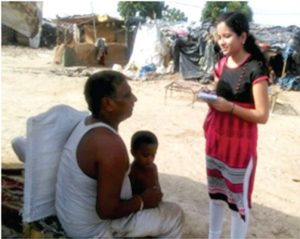 Team B came up with a suggestion to utilise children as agents of change in the society regarding toilet usage. The reason behind this is that behavioural change could be brought about by partnering with schools. The main aim of these change agents (children) would be to spread the message among their peers regarding usage of toilets by conducting awareness sessions. This would be a win-win situation for everybody. Children would be benefitted as they would have a more hygienic environment to study. Schools would be benefitted as there will be a cleaner environment thereby aiding in the holistic development of students.
Team B came up with a suggestion to utilise children as agents of change in the society regarding toilet usage. The reason behind this is that behavioural change could be brought about by partnering with schools. The main aim of these change agents (children) would be to spread the message among their peers regarding usage of toilets by conducting awareness sessions. This would be a win-win situation for everybody. Children would be benefitted as they would have a more hygienic environment to study. Schools would be benefitted as there will be a cleaner environment thereby aiding in the holistic development of students.
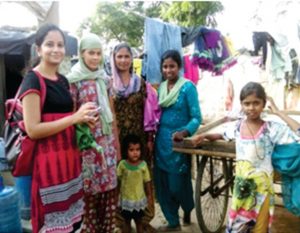 Students who are proactive in school activities and are regular in attendance are inducted into the Sulabh School Sanitation Club. Proximity to the school was also a factor in deciding who would become a change agent. Team C also suggested that their efforts should be acknowledged publicly to keep their motivation levels high. They could also be provided an awareness kit containing a volunteer handbook, posters, badges, a token gift, and a certificate.
Students who are proactive in school activities and are regular in attendance are inducted into the Sulabh School Sanitation Club. Proximity to the school was also a factor in deciding who would become a change agent. Team C also suggested that their efforts should be acknowledged publicly to keep their motivation levels high. They could also be provided an awareness kit containing a volunteer handbook, posters, badges, a token gift, and a certificate.
The Team recommended that focus should be on sustained campaigns in which all citizens and organisations are engaged to achieve the goals of Swachh Bharat Abhiyan by inspired and committed leadership. Social pressure should be created by monitoring the communities’ progress through change agents. Laws should be implemented to penalise littering. Involving national and local NGOs along with private sectors will result in a flourishing rural industry of building toilets and their maintenance.
3. Solutions for Improving Healthcare– Alignment Towards CSR
Team C made an attempt at finding solutions for improving healthcare facilities. They visited both government and private hospitals. The idea was to study problems existing in government healthcare sector and offer solutions for improving healthcare.
To find the working of a government hospital, Team C visited the District Combined Hospital, Sanjay Nagar in Ghaziabad. They also studied the CSR initiative by Fortis Healthcare Ltd. implemented through Fortis Charitable Foundation (FCF) and its hospitals across India.
Team C found the problems faced by medical personnel in government hospitals. They found that lack of incentives and undefined Key Result Areas (KRAs) led to demotivation among hospital staff. Absence of appraisal system and bureaucratic hurdles in making any change or reform proves to be a detriment to medical personnel. Doctors were lax in following work timings. Most of the doctors had studied in good colleges but quality of services in the hospitals is far from satisfactory. Team C felt there was low awareness of social etiquettes and decorum in hospitals. Visitors to the hospital do not maintain silence thus disturbing the patients. Medical waste is not disposed properly. The hospital has tobacco spit marks and unclean bathrooms.
Team C found totally different results after studying a private hospital – Fortis Healthcare Ltd. This is a CSR initiative through Fortis Charitable Foundation (FCF) which is committed towards providing healthcare for the socially marginalised and deprived sections of society. They ensure that their programmes are efficient, sustainable and relevant to beneficiaries.
It is seen that Fortis Healthcare has a robust mechanism to implement, record, review and measure the outcome of the initiatives. 300 employees are involved in their programmes – Sewa, Aanchal and Savera. There is proper disposal of medical wastes and developments to tackle X-ray exposures. The support staff is well trained and is able to respond or tackle situations. There are proper signs and caution boards in the aisles reminding people to maintain decorum.
Recommendations:
Team C recommended the following changes to improve the present condition in the government hospital.
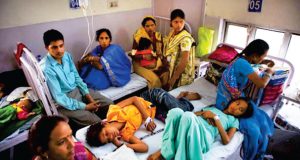 “Using CSR funds for healthcare can prove to be a win-win situation for Corporates as well as the community. CSR health initiatives can be organised along internal or external lines. Internal strategies may be implemented to improve the working environment, to reduce negative externalities or to establish access to facilities that are of relevance to the corporation’s demographic and risk profile. External CSR health initiatives maybe introduced to mitigate risks or to extend benefits to the environment and communities”
“Using CSR funds for healthcare can prove to be a win-win situation for Corporates as well as the community. CSR health initiatives can be organised along internal or external lines. Internal strategies may be implemented to improve the working environment, to reduce negative externalities or to establish access to facilities that are of relevance to the corporation’s demographic and risk profile. External CSR health initiatives maybe introduced to mitigate risks or to extend benefits to the environment and communities”
- Appraisal and incentives for top performers of the support staff.
- Good training provided to support staff.
- Bureaucratic hurdles should be relaxed and contributions by doctors should be highlighted.
- Proper supervision regarding medical waste disposal and cleanliness.
- Monitoring doctors’ arrival and departure.
- Implementation of feedback system suitable and easier even for the uneducated to give a proper feedback of the hospital
- Proper sign boards and people should be made aware of the hospital decorum to be maintained
Recommendations for Corporates:
More CSR funds should be diverted towards healthcare to improve the overall situation in the healthcare sector, especially in rural areas. Team C studied CSR initiatives taken by healthcare organisations like GlaxoWellcome Manufacturing Pvt.Ltd, Danone and Emirates. It is seen that GlaxoWellcome Manufacturing Pvt. Ltd, an organisation making products for GlaxoSmithKline (GSK), has recorded significant changes in employee health and productivity. Using CSR funds for healthcare can prove to be a win-win situation for Corporates as well as the community. CSR health initiatives can be organised along internal or external lines. Internal strategies may be implemented to improve the working environment, to reduce negative externalities or to establish access to facilities that are of relevance to the corporation’s demographic and risk profile. External CSR health initiatives may be introduced to mitigate risks and/or to extend benefits to the environment and communities.
4 . Employment Issues- Evaluation of MNREGA Scheme
Team D studied employment benefits under MNREGA. They studied the benefits of MNREGA in a macro perspective and then did a survey. They studied the gaps in the existing system which needed to be changed to increase the overall benefits of the scheme. The survey was conducted in areas of Muradnagar and Modinagarin U.P.
Analysing from a macro perspective, Team D concluded that MNREGA has the potential to make considerable impact on society regarding the following issues:
1. Employment Generation and Asset Creation in Rural Areas
2. Women Empowerment in Rural India
3. Employment Provided in Drought affected Areas
4. Financial Inclusion
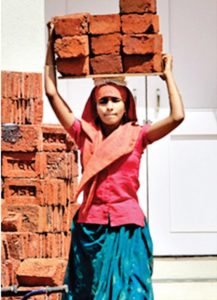 A survey was conducted to study the functioning of this scheme. Team D found that awareness level about the scheme was created among villagers through Gram Panchayat meetings, newspapers, village schools, etc. All local communication channels were utilised to spread awareness and information about the scheme. 50-60 percent households registered for the scheme but the Gram Panchayat officials were struggling with its teething problems. Most of the households are not able to work for more than 30-35 days on an average; women participation being very less. The process of enrollment, registration and issue of job cards is very smooth and most of the households have been issued these cards by the officials. 10 percent of adults are not registered on the job cards. Photographs on the MGNREGA card were not seen in a few households. Unemployment allowance is not provided to any of the households. Some Gram Panchayats are not making efforts to create a sustainable environment for work.
A survey was conducted to study the functioning of this scheme. Team D found that awareness level about the scheme was created among villagers through Gram Panchayat meetings, newspapers, village schools, etc. All local communication channels were utilised to spread awareness and information about the scheme. 50-60 percent households registered for the scheme but the Gram Panchayat officials were struggling with its teething problems. Most of the households are not able to work for more than 30-35 days on an average; women participation being very less. The process of enrollment, registration and issue of job cards is very smooth and most of the households have been issued these cards by the officials. 10 percent of adults are not registered on the job cards. Photographs on the MGNREGA card were not seen in a few households. Unemployment allowance is not provided to any of the households. Some Gram Panchayats are not making efforts to create a sustainable environment for work.
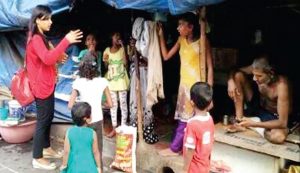 Monitoring and supervision of the scheme takes place at regular intervals. The Gram Sabha and Gram Panchayats meet three to four times where they also recheck all the rejected applications. It is observed that the payment process is quick and transparent. A downside of the scheme is that the cards, although issued in names of villagers, are kept with the Gram Panchayats and are provided to the persons concerned only 2-3 days prior to the start of work. The nature of work is mainly construction activities. On studying work site facilities, Team D found that drinking water was available at most of the work sites. Open defecation was still a problem.
Monitoring and supervision of the scheme takes place at regular intervals. The Gram Sabha and Gram Panchayats meet three to four times where they also recheck all the rejected applications. It is observed that the payment process is quick and transparent. A downside of the scheme is that the cards, although issued in names of villagers, are kept with the Gram Panchayats and are provided to the persons concerned only 2-3 days prior to the start of work. The nature of work is mainly construction activities. On studying work site facilities, Team D found that drinking water was available at most of the work sites. Open defecation was still a problem.
It was seen that the MNREGA scheme has made an impact on socio-economic conditions in the villages. The minimum earning level has gone up by a marginal amount. Women employment has increased leading to an increase in women empowerment. Expenditure on food and non-food items such as bicycles, loan repayment, etc. has increased due to higher earning capacity of villagers. A significant impact of the scheme was that it managed to reduce distress migration. It is commendable to note that out-migration has reduced by up to 35-40 percent.
Recommendations:
Team D recommended that the weaknesses of the programme should be tackled. Considering the far flung impact of MNREGA, the following steps should be adopted:
• There is low awareness among some women workers of MGNREGA. To come out of this anomaly, more awareness campaigns have to be conducted to educate people about the provisions of the programme.
• There is delay in payment of wages for some workers. To avoid this, appropriate steps are to be taken by the government to maintain uniformity in wage payment.
• Some of the work site facilities are very poor. Steps should be taken to provide adequate work site facilities. Separate mechanisms should be evolved for this purpose.
• For comprehensive participation of women, they should be allowed to be involved in planning for MGNREGA.
• Women participation can be enhanced by appointing female supervisors on MGNREGA works and in conducting social audits.
• Women should be involved in the selection of works, which can create further mainstream employment in the village.
• Designing special Statement of Rates (SOR) for women, preferably by conducting a systematic time and motion study, to ensure that they earn the set minimum wages.
• Improving overall quality of employment of MGREGA.
CONCLUSION:
 The Teams analysed different socio economic issues and gave recommendations for improving the existing situation. These recommendations, if implemented, would go a long way in solving problem existing in the society. Today’s world is a solution economy where problems are being solved in a collaborative manner. In a liberalised economy, businesses are the fulcrum of development and growth in society.
The Teams analysed different socio economic issues and gave recommendations for improving the existing situation. These recommendations, if implemented, would go a long way in solving problem existing in the society. Today’s world is a solution economy where problems are being solved in a collaborative manner. In a liberalised economy, businesses are the fulcrum of development and growth in society.
“There are more than 3000 business schools in our country. If all of them inculcate values of social responsibility in their students, more problems in our society can be solved through scientific solutions”
The government is trying to solve the problems present in the society and it is joining hands with business, academia and society to find solutions to the problems. Social enterprises and innovations are leading the wave of change. There are more than 3000 business schools in our country. If all of them inculcate values of social responsibility in their students, more problems in our society can be solved through scientific solutions.
Dr. Ranjana Agarwal is an Associate Professor, Economics at IMT Ghaziabad. She is involved in several action research related projects and is actively working in promoting sustainable livelihood for tribal women in Jharkhand.

